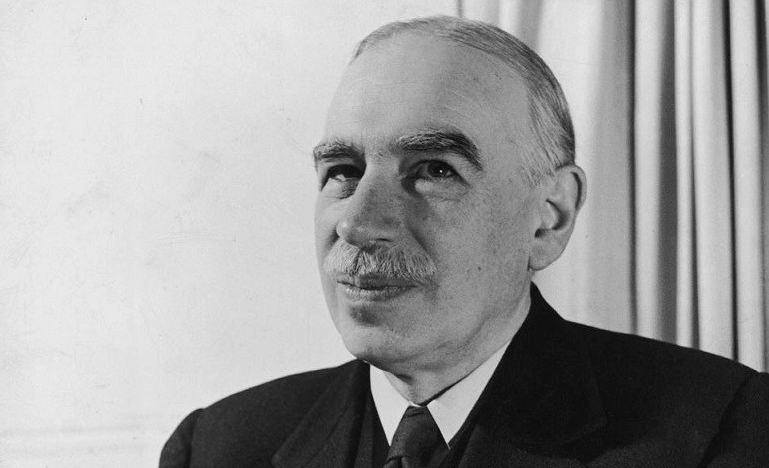What is Keynesianism?
Keynesianism was founded by John Maynard Keynes in the 1930s and is an economic policy theory of economics. In this approach, the state intervenes in the market economy. Basically, it is about influencing supply and demand, and thus the market equilibrium, in order to stabilize the economy. In other words, Keynesianism is about controlling production, employment and inflation through overall government spending.
Every product (good) or service is in demand by households and companies. For example, every household needs a certain amount of food. Suppliers will offer their product or service depending on the demand. If the company’s product or service is in high demand on the market, the company will also produce more and therefore need more employees. The employees receive a wage and can therefore afford products and services and also demand them. High demand therefore has a positive effect on the company’s production. In the best case scenario, companies can utilize their entire production capacity. This in turn has a positive effect on full employment. Low demand therefore means that suppliers can produce less. A long-term decline in demand can lead to redundancies. As a result of redundancies, the purchasing power of the population decreases and therefore the demand for products and services continues to fall.
In Keynesianism, the state influences precisely this mechanism. If the economy is doing badly and demand is falling (recession), the state spends money to boost demand. The state should make savings when the economy is doing very well, for example by increasing taxes. The state should therefore behave anti-cyclically.

John Maynard Keynes, source: www.history-biography.com
Opponents of Keynesianism – monetarism
The opposite of Keynesianism is monetarism. Monetarism states that interventions in the economy can have a negative impact(inflation). Monetarism focuses on controlling the money supply. Supporters of monetarism assume that the market is able to create a new equilibrium without any intervention. Companies and investors, who profit from lower input prices in pursuit of their own interests, would rebalance production and prices after a widespread economic downturn, provided they were not prevented from doing so by other means.
Keynes believed that the Great Depression seemed to disprove this theory. Production was low and unemployment remained high during this period. Keynes rejected the idea that the economy would return to a natural state of equilibrium. Instead, he argued that during recessions, business pessimism and certain features of the market economy would exacerbate economic weakness and further depress aggregate demand. For this reason, government intervention is necessary.
Advantages and disadvantages of Keynesianism
One advantage of Keynesianism is that the focus is on full employment. In the past, the application of Keynesianism has had a stabilizing effect on the economy during severe recessions.
The disadvantage of Keynesianism is the state’s indebtedness. If there is a high level of government debt, it may be necessary for the government to print money in order to pay off the debt. This can lead to inflation. After the state has spent money, the state must save, which leads to tax increases as soon as the economy has recovered. The state should behave anti-cyclically. To do this, it is necessary to determine the economic cycle precisely, which is not possible.

